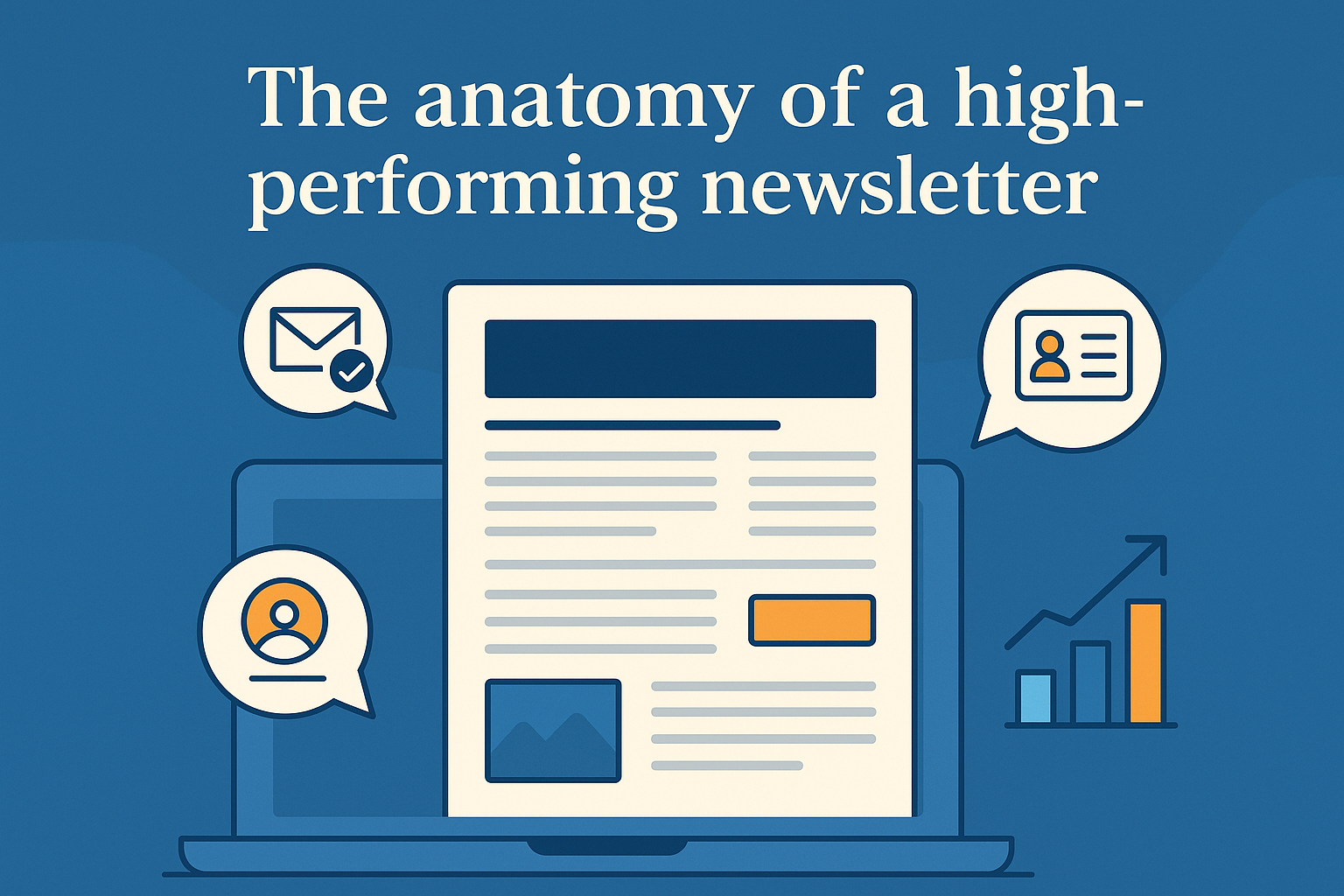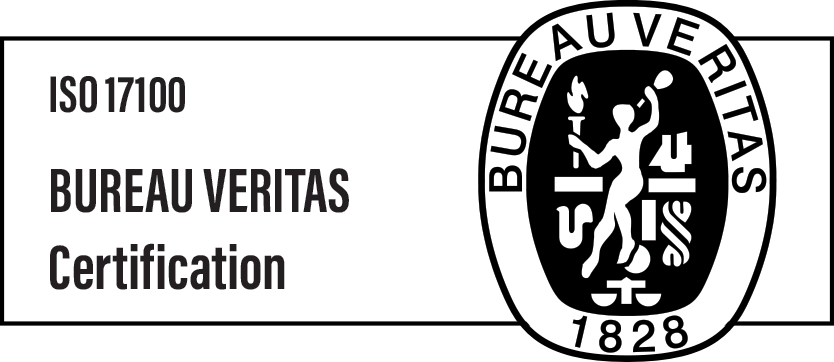The anatomy of a high-performing newsletter

Why email still wins
Email is far from outdated. In fact, it remains one of the most effective tools in digital marketing. For language service providers, a well-crafted email can build trust, showcase expertise, and drive conversions. When done right, email marketing delivers one of the highest returns on investment (ROI) among all digital channels.
But not all newsletters are created equal. Some get opened, read, and clicked. Others go straight to the trash. What’s the difference? Structure. Like any good product, a high-performing newsletter has a clear and thoughtful design. Every element—subject line, content layout, visuals, and CTA—works together to guide the reader and deliver value.
Let’s break down the anatomy of a high-performing newsletter. We’ll look at what makes each part work and how you can apply these tips in your next campaign.

Why email still wins
Subject line & preheader: small text, big impact
The subject line is your first (and often only) chance to grab attention. In busy inboxes, it’s the headline that decides if your email gets opened or ignored. For LSPs, this is where you can hint at your value, urgency, or relevance.
Keep subject lines short—under 50 characters if possible. Make them clear, but not boring. A question, a benefit, or even a surprising fact can draw the eye. For example:
“Want to boost your global reach?”
“Your free translation audit is ready”
“New client story: From local to global in 30 days”
Just below the subject line is the preheader. Think of it as a second headline. It appears right after the subject in many inboxes. Use it to add context or expand on the offer. For instance:
Subject: “New eBook for LSP clients”
Preheader: “Learn how top agencies build client loyalty through content”
Together, these two lines decide your open rate. Spend time on them. Test different versions. The right combination sets the tone for a high-performing newsletter.

Subject line & preheader: small text, big impact
Content design: easy to read, hard to ignore
Once your email is opened, the design must hold attention. For LSP clients, clarity is everything. Your content should be clean, simple, and purposeful. Avoid long blocks of text. Use short paragraphs, bullet points, and section headers.
Balance visuals with words. Too many images slow load times or trigger spam filters. But used wisely, visuals add value. Think: a quote from a client in a stylized box, a sample translation layout, or a short graphic showing your process.
Make the layout scannable. Most readers skim before they commit. Use bold text, spacing, and color to guide their eyes to the key points. Each section should have a clear purpose—introduce, inform, or encourage action.
Finally, include a clear call to action (CTA). It should stand out visually and make sense contextually. Don’t overwhelm the reader with five different buttons. Focus on one or two actions, like:
“Schedule a demo”, “Download the guide”, or “Read the full case study”.
A well-designed layout increases reading time and click-through rates. It’s a vital part of a high-performing newsletter.

Content design: easy to read, hard to ignore
Personalization & segmentation: make it personal, make it work
Sending one generic email to everyone rarely works. The most effective newsletters speak directly to the reader’s needs. That’s why personalization and segmentation are essential for a high-performing newsletter.
Personalization goes beyond using a name. For LSPs, it might mean referencing a client’s industry (e.g., legal, medical, or e-commerce), their recent interaction, or their region. Even small touches like language preference or time zone can make your message feel more relevant.
Segmentation lets you group your audience by shared traits—such as job role, company size, or service interest. This allows you to tailor your message more precisely. For example, a campaign targeting project managers at tech companies might focus on scalability and integrations, while one for freelancers could highlight CAT tool compatibility or ease of collaboration.
📌 Mini Case Study
One LSP segmented their list by industry and sent tailored newsletters to three client groups. The legal-focused group received updates on certified translations and confidentiality practices. The marketing group got tips on transcreation. Open rates increased by 40%, and clicks doubled compared to previous general mailings.
Relevance always beats volume. When your readers feel like your email was written for them, they’re far more likely to engage.

Personalization & segmentation: make it personal, make it work
Metrics that matter: measuring success
You can’t improve what you don’t measure. Tracking key performance metrics is the only way to know if your newsletter is doing its job—or falling flat.
Start with the basics:
Open Rate: Are people even opening your email? A good subject line and preheader will help.
Click-Through Rate (CTR): Are they engaging with your content? This tells you if your design and CTA are working.
Conversion Rate: Did they take the next step—schedule a meeting, download your guide, or request a quote?
For language service providers, conversions might look different depending on your campaign. It could be signing up for a webinar, booking a discovery call, or just replying with a question. Define your goal before you hit send.
Don’t forget about A/B testing. Test one element at a time—like subject lines, CTA buttons, or even send times. Over time, these insights will help you refine what works best for your audience.
Data is not just numbers. It tells a story. A high-performing newsletter evolves through constant learning. Make metrics part of your content cycle, not an afterthought.

Metrics that matter: measuring success
Newsletters as conversations
A newsletter isn’t a one-way message. It’s not a “blast.” It’s a curated conversation with your audience—one that builds trust, shows value, and moves people toward working with you.
For LSPs, that means every part of your email—from subject to CTA—should reflect who you are and who you’re speaking to. Keep your messaging clear. Respect your reader’s time. And always aim to provide something useful.
When you understand the anatomy of a high-performing newsletter, you can connect more effectively, earn more engagement, and drive real results.
And the best part? You don’t need to send more emails. You just need to send better ones.

Newsletters as conversations

